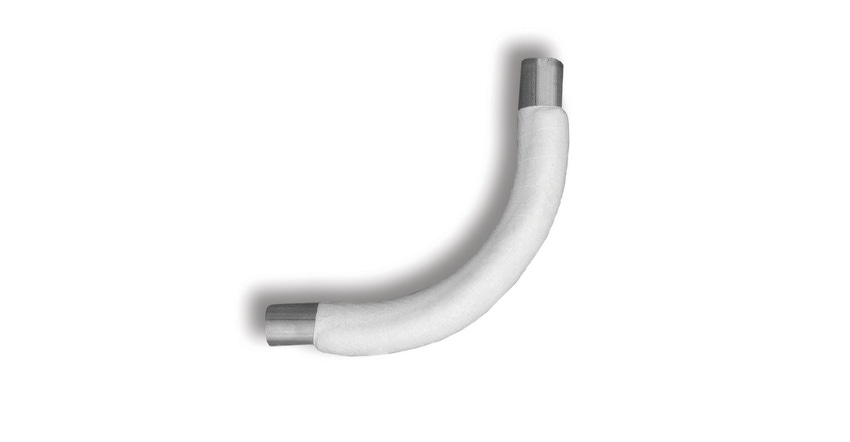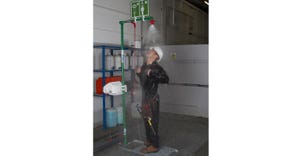The Superiority of Abrasion-Resistant Elbows and Fittings in Industrial Applications
Abrasion-resistant elbows and fittings offer a clear advantage over their traditional counterparts.
April 23, 2024

In the fast-paced world of industrial manufacturing, efficiency and durability are key factors determining any operation's success. One crucial component often overlooked--but vital in maintaining a smooth workflow--is the choice of elbows and fittings. In this article, we delve into abrasion-resistant elbows and fittings, exploring their benefits and highlighting why they are the preferred choice for manufacturers.
Understanding the Importance of Elbows and Fittings
Elbows and fittings are essential components in any piping system. They redirect the flow of liquids, gases, or slurries, ensure optimal functionality, and prevent potential leaks or disruptions. Choosing elbows and fittings becomes even more critical in industrial settings, where harsh conditions and abrasive materials are prevalent.
When installing a new system, initial designs may be either successful or flawed. If you are satisfied with your system's performance but want to extend the lifespan of its parts, consider replacing current elbows and/or fittings with abrasion-resistant ones. If your system is flawed and underperforming, abrasion-resistant elbows and fittings can prolong part life and improve performance. Sometimes, designs that seem adequate on paper could perform much better in practice, presenting an opportunity to address durability and performance issues with a single solution.
The Power of Abrasion-Resistant Materials
Abrasion-resistant elbows and fittings are designed to withstand the harsh effects of abrasive substances, such as fly ash, raw alumina powder, sand, aggregates, slurry, and custom mixtures commonly found in manufacturing processes. The materials used to create abrasion-resistant elbows are carefully selected and engineered, according to the material being conveyed, to offer superior resistance to wear, erosion, and corrosion, prolonging the lifespan of the piping system and reducing maintenance costs.
Abrasion resistance comes in many forms, depending on what you convey in your pneumatic system. Different applications require different solutions. There are solutions for situations where contamination is not an issue and solutions that are FDA-approved and/or GRAS for food and pharmaceutical applications. Furthermore, other piping issues can be chemical reactions with steel or a need for a glass smooth surface to prevent clogging.
The types of materials used to create abrasion-resistant elbows and fittings are numerous. Some of the most effective are AR plate, cement, wear-resistant compounds, cast ceramic tile, and porcelain linings. These items will cover almost every issue with abrasion problems. Ceramic-based solutions suit any application, including food and pharmaceutical contact. They are GRAS, generally regarded as safe, and FDA-accepted. These items work well with consumable items and for high abrasion areas. Also included in this would be anything that has particles larger than 1/8 in. and causes impact wear. The cast ceramic tile is the best solution, as its thickness can be increased to deal with the large particles that would cause other solutions to fail by fracturing. Tile solutions can be applied to the interior or exterior of an elbow or fitting. Not only can these items be used on elbows and fittings, but they can also be used on straight runs. The tile solutions can be applied to the interior of a pipe, providing additional protection from corrosion and erosion. The tiles can also be applied to the pipe's exterior, increasing its durability and preventing it from wearing down over time. Cement back elbows are popular with quarries and cement manufacturers. As the back of the elbow wears down, it releases like material to be mixed as the cement wears away. Adding AR plate to the back of any wear back elbow provides protection once the interior substance is gone. A porcelain lining aids in applications where there are acidic or reactionary chemicals being moved through the line. The porcelain lining is glasslike, not to be confused with interior ceramic linings, which are for extreme abrasion.
Exterior versus interior lining is quite a common dilemma. Exterior options can be applied and held in place with specialty reinforcements or contained in box-shaped cavities welded onto the back of the elbow. The term “wear back” is a generic term used to describe any protective exterior modification applied to the back of the elbow, which includes but is not limited to mortar-filled, cement-filled, ceramic compound, cast ceramic tile, a hollow cavity, or a replaceable back elbow with a bolted-on plate for the back. Conversely, interior solutions are applied to the inside of the piping. Interior options are usually held in place by pressure, adhesive, or a unique dipping process that adheres as it is applied. These solutions include but are not limited to cast ceramic linings, basalt linings, tungsten carbide, and porcelain coatings. Interior processes can be much more expensive, but an extremely long lifespan usually accompanies that cost.
Advantages of Abrasion Resistant Elbows and Fittings
Enhanced Durability: Remarkable durability is the primary advantage of abrasion-resistant elbows and fittings. These components are built to withstand the harshest conditions, including high temperatures, extreme pressures, and the constant flow of abrasive materials. This robust design translates into longer service life and minimal downtime for manufacturers.
Reduced Maintenance: Traditional elbows and fittings often succumb to abrasive wear over time, leading to frequent repairs or replacements. However, with abrasion-resistant variants, maintenance requirements are significantly reduced. Their resistance to wear and erosion means less downtime, lower maintenance costs, and increased manufacturer productivity.
Improved Performance: Manufacturers can improve overall performance by incorporating abrasion-resistant elbows and fittings into the piping system. The smooth interior surface of these components minimizes frictional losses and pressure drops, allowing for efficient flow and optimal system operation. This enhanced performance translates into increased productivity and energy savings.
All of the advantages discussed result in massive savings overall for the company. By installing just one component that will last 10 times longer, most companies will experience an annual savings of $8,000-$12,000 compared to having a bare fitting that needs replacement every 2-3 months. If you replace multiple fittings, you will compound your savings, which will directly correspond to higher profits.
Conclusion
In industrial manufacturing, where efficiency, durability, and cost-effectiveness are paramount, choosing elbows and fittings should not be taken lightly. Abrasion-resistant elbows and fittings offer a clear advantage over their traditional counterparts by providing enhanced durability, reduced maintenance requirements, and improved overall performance. Though these items have a higher up-front cost, the long-term savings far outweigh that expense. Not only do abrasion-resistant parts pay for themselves, but they will also make you money. Manufacturers prioritizing their operations' long-term success should consider incorporating these superior components into their piping systems.
Dave Barnes is VP of sales, Progressive Products Inc. (Pittsburg, KS). For more information, call 620-235-1712 or visit progressiveproductsinc.com.
About the Author(s)
You May Also Like




